
A printer is one of the output devices of a computer that prints the results of computer processing on a related medium. There are three indicators that measure the quality of a printer: print resolution, print speed, and noise. There are many types of printers, according to whether the printing element has a hitting action on the paper, it is divided into percussion printers and non-impact printers. According to the printing character structure, it is divided into holographic character printer and dot matrix character printer. According to the way a line of words is formed on paper, serial printers and line printers. According to the technology used, cylindrical, spherical, inkjet, thermal, laser, electrostatic, magnetic, light-emitting diode and other printers.
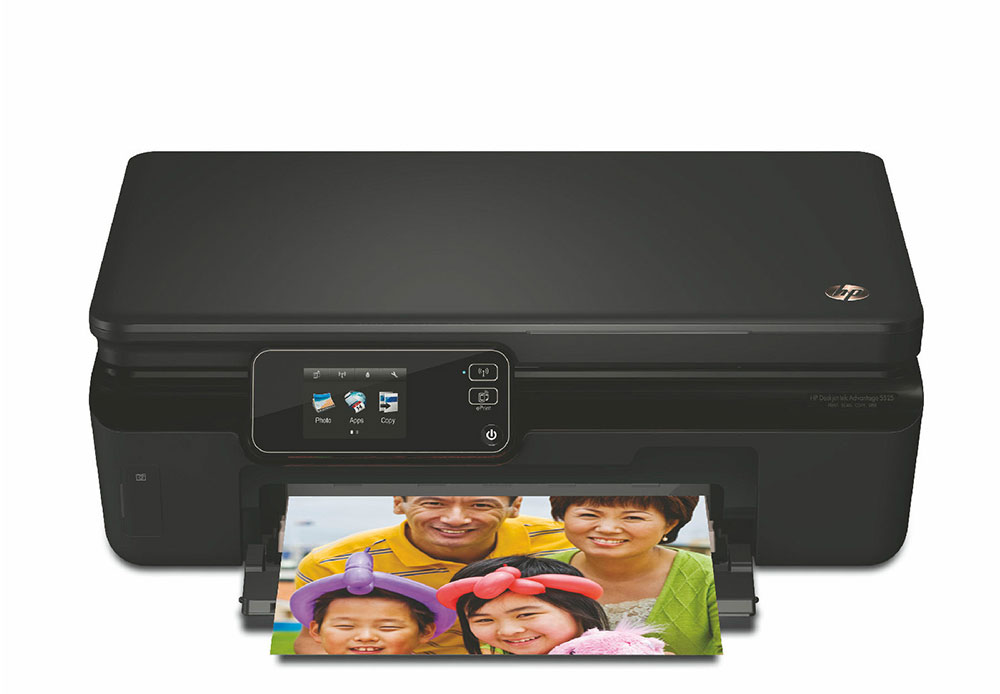
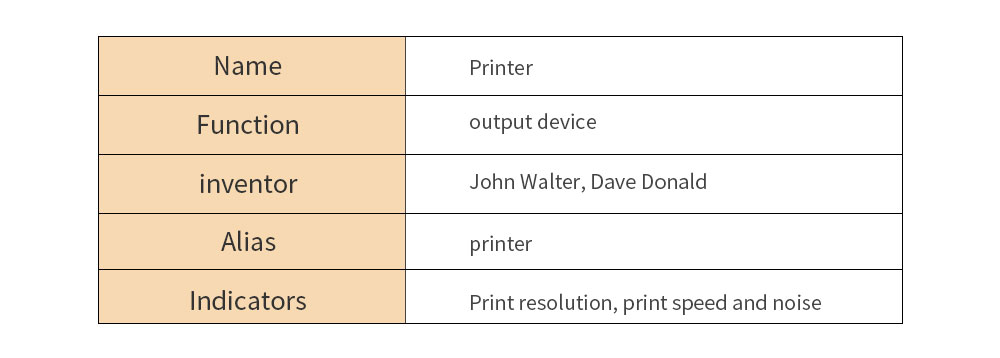
History
The printer was invented by John Walt and Dave Donald. A device that prints the results of computer calculations or intermediate results on paper in a prescribed format with numbers, letters, symbols, graphics, etc. that can be recognized by a person. Printers are developing in the direction of light, thin, short, small, low power consumption, high speed and intelligence.
With the rapid development of the Internet, some people predict that the paperless era is coming, and the end of printers has arrived. However, global paper consumption is growing exponentially every year, and printer sales are increasing at an average rate of nearly 8%. All this indicates that printers will not disappear, but will develop faster and faster, and the field of application will become wider and wider.
printer
printer
1. Technology
The basic working principle of inkjet printers is to first produce small ink droplets, and then use the inkjet head to guide the fine ink droplets to the set position, the smaller the ink droplets, the clearer the printed picture. The basic principle seems simple, but it's not that simple. Just as the principles of calculus are not complicated, they are how they are used.
The following describes several historic technological breakthroughs in inkjet printers.
Time Minutes of events
1976 The world's first inkjet printer is born.
1976 Piezoelectric ink dot control technology is introduced.
1979 Bubble Jet bubble inkjet technology is introduced.
In August 1980, Canon applied its bubble inkjet technology for the first time to its inkjet printer, the Y-80, and thus began the history of inkjet printers.
1991 The first color inkjet printer and large-format printer appeared.
1994 Micro piezoelectric printing technology came out.

printer
1996 Lexmark uses EXCIMER argon/fluorine laser cutting technology to launch the world's first 1200*1200dpi ultra-high resolution color inkjet printer, Lexmark CJ7000
1998 The world's first color spray EPSON Stylus Photo 700 with the highest resolution of 1440dpi and six-color printing is launched
1998 The world's first 7-color photo printer, Canon BJC-7100, is born
1999 The first color inkjet printer Epson IP-100 that can shoot A4 photos without a computer is born
2000 HP DJ970Cxi, the first color inkjet printer that supports automatic two-sided printing, is born.
2003 HP Photosmart 7960, the world's first digital photo printer using eight-color ink technology, is released
Spring 2005 The world's first 9-color photo printer, the HP Photosmart 8758, is born
1996 Lexmark uses EXCIMER argon/fluorine laser cutting technology to launch the world's first 1200*1200dpi ultra-high resolution color inkjet printer, Lexmark CJ7000
1998 The world's first color spray EPSON Stylus Photo 700 with the highest resolution of 1440dpi and six-color printing is launched
1998 The world's first 7-color photo printer, Canon BJC-7100, is born
1999 The first color inkjet printer Epson IP-100 that can shoot A4 photos without a computer is born
2000 HP DJ970Cxi, the first color inkjet printer that supports automatic two-sided printing, is born.
2003 HP Photosmart 7960, the world's first digital photo printer using eight-color ink technology, is released
Spring 2005 The world's first 9-color photo printer, the HP Photosmart 8758, is born
Inkjet printing technology was proposed as early as 1960, but it took 16 years for the first commercial inkjet printer to be born at IBM, and the original BM4640 was developed by Hertz, a professor at the Luther Institute of Industrial Technology in Sweden, and his colleagues in Europe, called continuous inkjet technology. The so-called continuous inkjet is to produce ink droplets in a continuous way, regardless of whether it is printed or non-printed, and then the non-printed ink droplets are recycled or dispersed. However, this technology almost uses drops to print ink dots on paper, and the effect is imaginable, so it has no practical value in reality.
In 1976, piezoelectric ink dot control technology was introduced
In the same year as the IBM 4640, Zoltan, Kyser and Sear, three pioneer researchers of Siemens Technologies, successfully developed piezoelectric dot control technology (the predecessor of EPSON technology) in the same year and successfully applied it to the Seimens Pt-80, which was mass-produced and sold in 1978, becoming the world's first commercially valuable inkjet printer. In 1979, the Bubble Jet bubble inkjet technology was introduced
Researchers at Canon in Japan have successfully developed Bubble Jet bubble inkjet technology, which uses a heating component to instantly heat the ink in the nozzle to generate bubbles to form pressure, so that the ink is ejected from the nozzle, and then the physical properties of the ink itself are used to cool the hot spots to fade the bubbles, so as to achieve the dual purpose of controlling the ink spot in and out and size. To quote a short story from the company, one day in July 1977, Ichiro Endo, a member of Laboratory 22 of the Canon Product Technology Research Institute in Meguro-ku, Tokyo, accidentally placed a heated soldering iron on the attachment of the injection needle while conducting experiments in the laboratory, and ink quickly flew out of the injection needle. Inspired by this, bubble inkjet technology was invented two years later.
At the same time, HP also invented the same technology, HP and Canon both claimed that their researchers were the first to invent inkjet printing technology, in order to establish their position in the field of inkjet printing. However, the concept of "bubbles" has been snatched up by Canon, and HP has to name it Thermal Ink-Jet.
In 1991, the first color inkjet printer, large-format printer, appeared
HP deskjet 500C is the world's first color inkjet printer, in June 1994, the domestic product HP DeskJet 525Q after local transformation. HP DesignJet is the world's first monochrome large-format inkjet printer introduced by Hewlett-Packard to apply its thermal inkjet printing technology to a large-format printer. The emergence of color inkjet printers and large-format printing is the most important milestone in the history of inkjet printers.In 1994, micro-piezoelectric printing technology came outAs early as the 70s of the last century, Epson began the research of piezoelectric technology, and after nearly 20 years, it finally successfully applied micro-piezoelectric printing technology to the field of printers and realized productization. The basic principle of microvoltage technology is to place many tiny piezoelectric ceramics near the printhead nozzle of the inkjet printer, and use the principle that the ink will deform under the action of voltage, so that the ink in the nozzle is ejected, forming a pattern on the surface of the output medium.Since then, Epson's intelligent ink drop transformation technology, natural color reduction technology, ultra-fine micro ink drop technology, etc.; Canon's professional photo optimization technology, quadruple color control technology, etc.; HP's Fullitu layering technology, intelligent color enhancement technology, and more. All further enhance the technical content of inkjet printers.
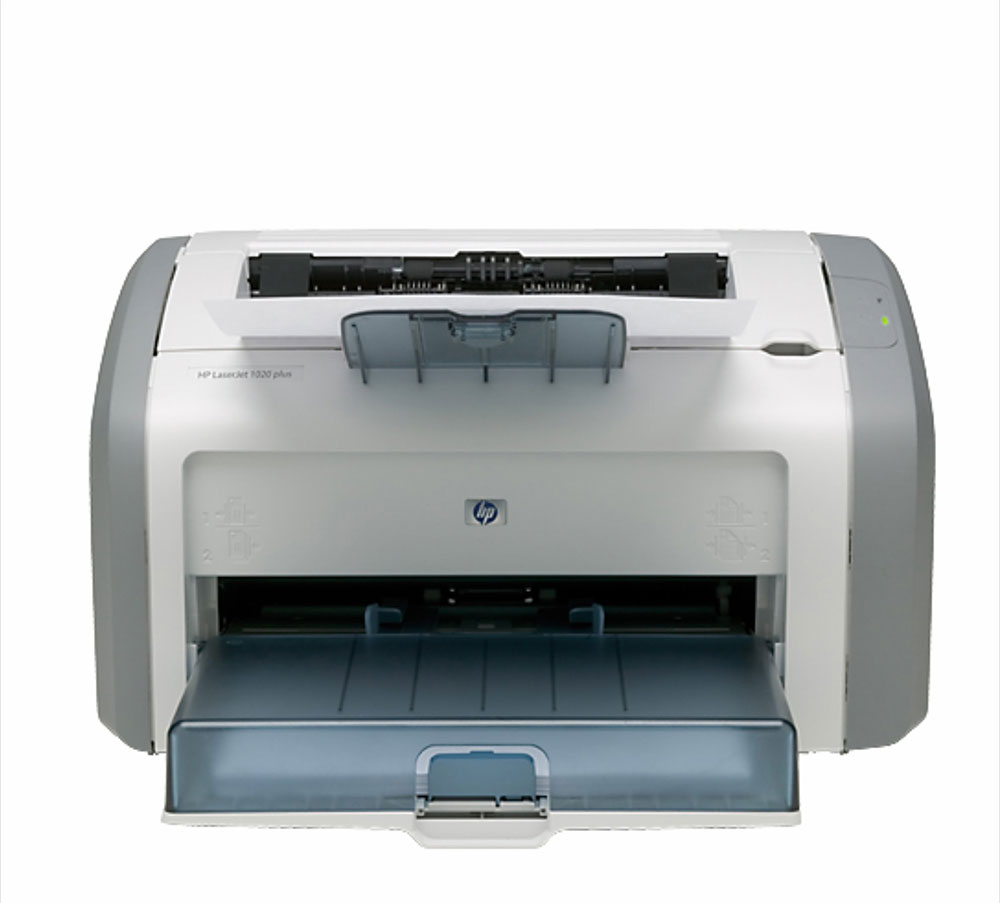
Specific classification
According to the principle
Printers can be divided into serial printers and parallel printers according to the data transmission mode.
According to the working principle of the printer, the printer is divided into two categories: hit type and non-impact type.
String dot matrix character non-impact printers There are mainly two kinds of inkjet and thermal printers. (1) Inkjet printer. The most widely used printer. The basic principle is that the charged inkjet fog spot is deflected by the electrode and directly forms the desired glyph on the paper. The advantage is that the dots that make up characters and images are much smaller than dot matrix printers, so the resolution of character dots is high, and the printing quality is high and clear. Character size and font can be changed flexibly and easily. Ordinary paper is used for printing, and this typewriter can also be used to print directly on certain products. There is no mechanical wear and tear during the formation of characters and graphics, and the printing energy consumption is small. Print speed up to 500 characters/second. Charge-controlled (high-pressure type) and random inkjet (negative pressure) inkjet technology are widely used, and dry inkjet printing technology has appeared. (2) Thermal printer.
printer
printer
The heat generated by the pulsed current flowing through the point resistance of the printing head is transferred to the thermal paper, causing it to be thermally discolored, thereby printing characters and images. The main features are no noise, light and small structure, and clear printing. The disadvantages are slow speed and poor handwriting preservation.
Line dot matrix character non-impact printers mainly include laser, electrostatic, magnetic and light-emitting diode printers. (1) Laser printer. The laser beam emitted by the laser source is modulated by the acousto-optic deflector controlled by the character dot matrix information, enters the optical system, and scans the rotating photoconductor drum laterally through a multi-sided prism, so that an electrostatic latent image of a character or image is formed on the photoguide film layer on the photoconductor drum, and then after development, transfer and fixing, the required character or image is obtained on paper. The main advantage is the high printing speed, which can reach more than 20,000 lines per minute. The quality of printing is high, the noise is small, ordinary paper can be used, and characters, graphics and images can be printed. Because of the high printing speed, macroscopically, it is like printing one page at a time, so it is also called a page printer. (2) Electrostatic printer. The pulse voltage is applied directly to a special paper with a layer of dielectric material in order to obtain an electrostatic latent image on the dielectric, which is developed and heated to form characters and images. It is characterized by high printing quality, no fading handwriting, long-term storage, low power consumption to generate latent images, no noise, simple and reliable. However, special paper is required and the cost is high. (3) Magnetic printer. It is the application and development of electronic copying technology. The use of magnetically sensitive media to form character latent images does not require a high-power laser source, and its advantage is that it is insensitive to humidity and temperature changes. The printing speed can reach 8000 lines/min. Simple structure and low cost. (4) Light-emitting diode printer. In addition to using light-emitting diodes as light sources, its working principle is similar to that of laser printers. Due to the use of light-emitting diodes, the cost is reduced and the power consumption is reduced.
By working style
Divided into dot matrix printers, inkjet printers, laser printers, etc. Dot matrix printers print character graphics through physical contact between the printer and paper, while the latter two print character graphics by spraying toner.
By use
Universal printers for office and transactions
In this field of application, dot matrix printers have always dominated. Because the dot matrix printer has medium resolution, printing speed, cheap consumables, and also has the characteristics of high-speed line skipping, multi-copy printing, wide-format printing, convenient maintenance, etc., it is the preferred model for printing reports, invoices, etc. in office and transaction processing.
Commercial printers
Commercial printers refer to commercial printing printers, because this field requires relatively high quality printing, and sometimes also processes illustrated documents, therefore, generally choose high-resolution laser printers.
Dedicated printers
Special printers generally refer to various printers used in special systems, such as passbook printers, flat push receipt printers, barcode printers, thermal printers, etc.
New printers
New printers
Bluetooth printer
Bluetooth printer is a small printer, through Bluetooth to achieve data transmission, can print a variety of receipts, barcodes anytime, anywhere, the difference with conventional printers is that you can operate on the induction card, can read the card number of the induction card and the data of each sector, and can also write data to each sector.
Home printers
Home printer refers to the home computer matching into the home printer, according to the characteristics of home printers, low-end color inkjet printers have gradually become mainstream products.
Portable printers
Portable printers are generally used with notebook computers, and have the characteristics of small size, light weight, battery driven, and easy to carry.
Network printers
Network printers are used in network systems to provide printing services for most people, so this printer is required to have fast printing speed, can automatically switch emulation mode and network protocol, and is convenient for network administrators to manage.
Universal printerIt is not limited by any material, and can carry out color photos and printing on flat materials such as wood, glass, crystal, PVC, ABS, acrylic, metal, plastic, stone, leather, cloth, and other textiles. Whether it is a simple block color pattern, a full-color pattern or a pattern with excessive color, it can be printed at one time, without plate making, printing and repeated color registration, and the application field is very wide.
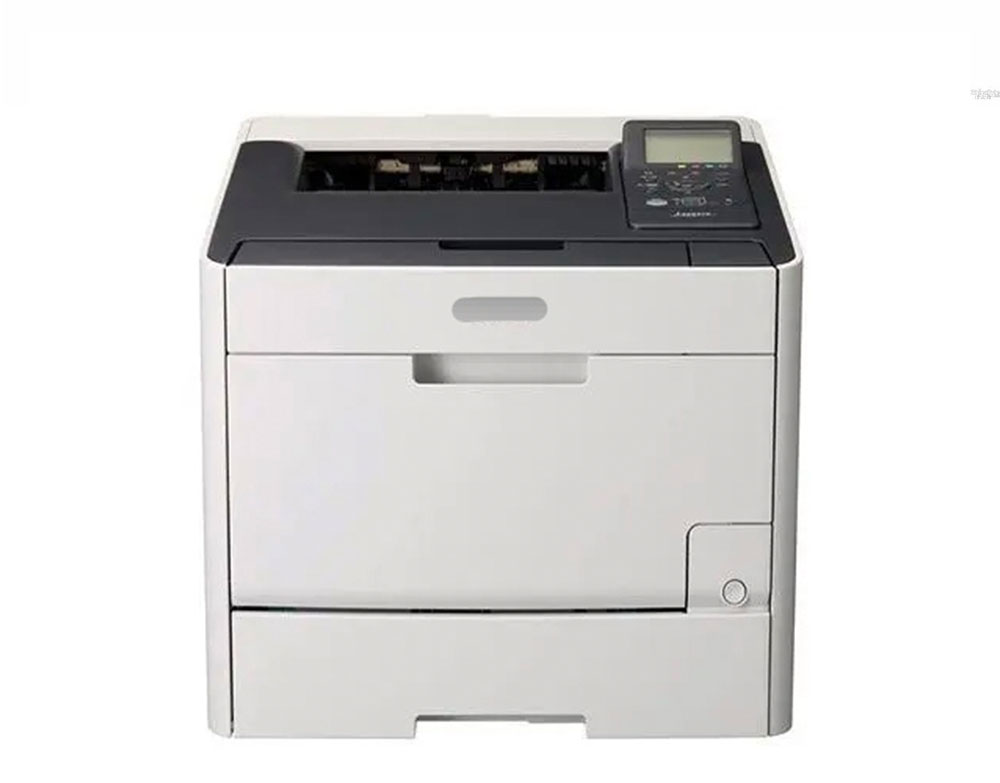
Specific operations
Step 1
Connect the printer to the host, turn on the printer, enter the Printers and Faxes folder through the console's Control Panel, right-click in the blank, select the Add Printer command, and open the Add Printer Wizard window. Select Connect to a local printer from this computer, and select the Automatically detect and install Plug and Play printers check box.
Step two
At this point, the host will test the new printer, and soon you will find the printer that has been connected, according to the prompts, put the driver CD that came with the printer into the optical drive, and after installing the driver for the printer, the icon of the printer will appear in the "Printers and Faxes" folder.
Step 3
Right-click the newly installed printer icon, select the "Share" command, open the printer's properties dialog box, switch to the "Share" tab, select "Share this printer", and fill in the "Share Name" input box with the name you want to share, such as CompaqIJ, click the "OK" button to complete the sharing setting.
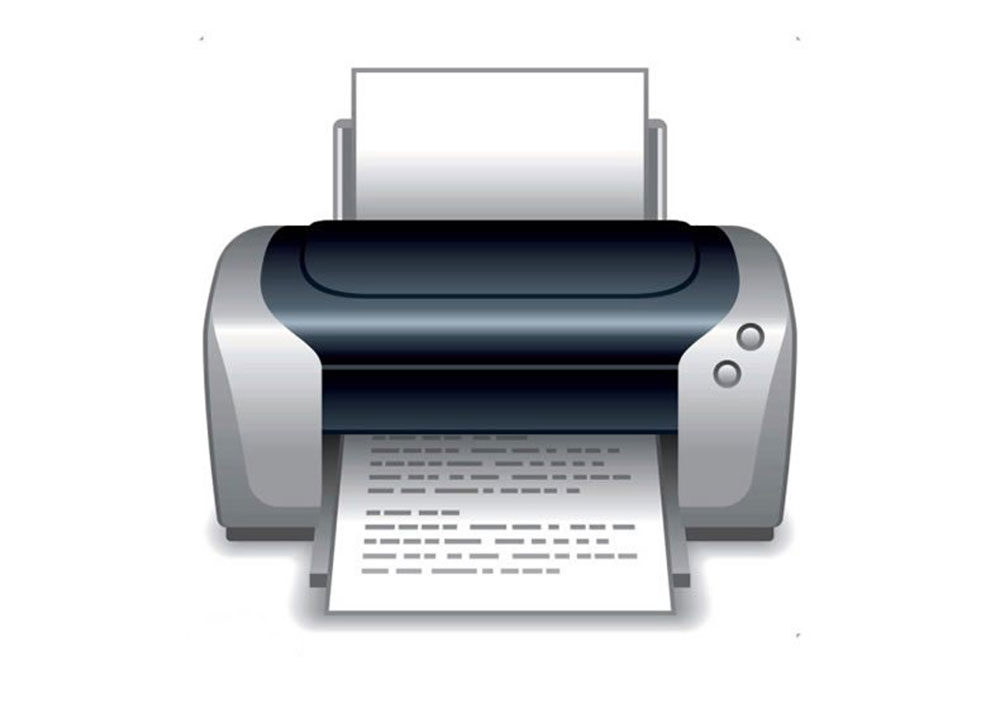
apply
Dot matrix printer
Dot matrix printers have occupied an important place in the history of printers for a long time, from 9 pins to 24 pins, it can be said that the history of dot matrix printers runs through these decades. The reason why dot matrix printers can be popular for a long time is inseparable from its extremely low printing cost and good ease of use, as well as the special purpose of document printing. Of course, its low print quality and large working noise are also the root of its inability to adapt to the needs of high-quality, high-speed commercial printing, so its traces can only be seen in banks, supermarkets and other places where ticket printing is rare.
Color inkjet printers
printer
printer
Color inkjet printers have occupied the majority of the low-end market because of their good printing effect and low price advantages. In addition, inkjet printers also have more flexible paper processing capabilities, in the choice of printing media, inkjet printers also have certain advantages: can print envelopes, letter paper and other ordinary media, but also can print a variety of film, photo paper, disc covers, roll paper, T-shirt transfer paper and other special media, will be introduced as the focus below.
laser printer
Laser printer is a new product of high-tech development, but also is expected to replace inkjet printers of a model, divided into black and white and color, it provides us with higher quality, faster, lower cost printing methods. Among them, the price of low-end black and white laser printers has dropped to several hundred yuan, reaching a level acceptable to ordinary users. Its printing principle is to use a raster image processor to generate a bitmap of the page to be printed, and then convert it into an electrical signal and other pulses sent to the laser transmitter, under the control of this series of pulses, the laser is regularly released. At the same time, the reflected beam is sensed by the received drum. When the laser is emitted, a dot is generated, and when the laser is not emitted, it is blank, so that a line of dots is printed on the receiver. The receiver then turns a short fixed distance to continue repeating the operation. When the paper passes through the drum, the colorant on the drum is transferred to the paper and printed as a bitmap of the page. Finally, when the paper passes through a pair of heating rollers, the colorant is heated and melted, fixed on the paper, and the whole process of printing is completed, which is accurate and efficient. Although the price of laser printers is much more expensive than inkjet printers, laser printers are much cheaper in terms of printing costs per page. The price of color laser printers is generally around 2,000 yuan.
Other printers
In addition to the above three most common printers, there are several printer models for professional applications, such as thermal transfer printers and large-format printers. Thermal transfer printer is the use of transparent dye for printing, its advantage is professional high-quality image printing, can print close to the continuous tone of the photo to the picture, generally used for prepress and professional graphics output. Large format printers, its printing principle is basically the same as inkjet printers, but the printing width can generally reach more than 24 inches (61cm). Its main use has been concentrated in the field of engineering and construction. However, with the improvement of its ink durability and the increase of graphic resolution, large-format printers have begun to be used more and more in the fields of decorative publicity such as advertising production, large-scale photography, art photography and interior decoration, and have become an important member of the printer family.
The United States ZCorp is a professional 3D printer manufacturer, producing the world's fastest 3D printer, and the only true color 3D printer, coupled with the extremely low cost of consumables, it is favored by many users around the world. Israel 2Objet rapid prototyping machine PolyJet technology, Eden series three-dimensional printer, 16 micron ultra-high resolution, FullCure series materials, is the world's highest molding accuracy (layer thickness of only 0.016mm) the easiest to use three-dimensional printing rapid prototyping machine
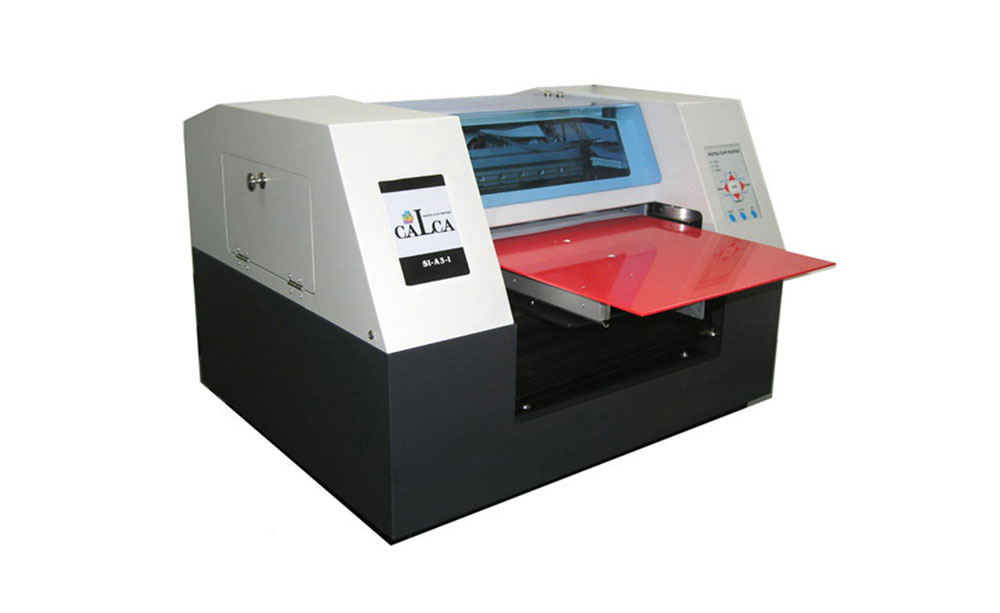
Supplies
Original consumables, general consumables, compatible consumables; Divided into domestic and imported; Domestic ones have Lenovo, Gezhige, Xinge, etc.; Generally, the original printing quality is the best, the domestic cost performance is high, and the quality is also good. Some are comparable to the original. The types are: toner cartridges, ink cartridges, toner, ribbons, etc. Each printer is owned by its own type.
According to the type of printer, printer consumables can be classified as follows:
Printer ribbon
Printer ribbon
Dot matrix printer, ribbon. Dot matrix printer ribbon, divided into broadband and narrow band. Some ribbons can be replaced individually, and some ribbons must be replaced together with the ribbon holder. You can replace different color ribbons according to your needs;
Laser printers, toner, toner cartridges. The toner and toner cartridges of some laser printers can be separated, and after the toner is used up, it can be conveniently filled with toner, and then continue to be used until the toner cartridge is aged and replaced; Some laser printer toner and toner cartridge are integrated, after the toner is used up, the toner cartridge should be discarded, resulting in a certain waste. The cost of toner cartridges accounts for a large part of the cost of the whole machine.
Printer toner
Printer toner
Inkjet printers, ink, all-in-one cartridges. Inkjet printers, according to different printing colors, there are 4 colors, 5 colors, or 6 colors, etc., printer ink can generally replace one of the colors of ink separately, not like the early inkjet printers, as long as one of the colors of ink is used up, it needs to be replaced together with the remaining colors, resulting in waste. Some printers after the ink is used up, as long as the ink is replaced, the print nozzle can be used permanently, the advantage of this printer is that the cost of changing the ink is low, the disadvantage is that if the print head is used for many times, the print quality will decrease, and it is easy to block the nozzle problem, if it is serious, the printer should be repaired or scrapped; Some printer nozzles and cartridges are integrated, when replacing the cartridge, together with the nozzle at the bottom of the cartridge is also replaced, the cost of this cartridge is more expensive, the advantage is that this printer will not have the problem of nozzle blockage, if blocked, after replacing the cartridge, the printer can still be used, and the print quality can be maintained beautifully.
Relatively speaking, the cost of using ribbons is the cheapest, and the disadvantage is that the printing effect is not ideal, and color graphics cannot be played; Laser printer toner and toner cartridges, the most expensive to use, the highest printing accuracy, but the printing color effect is not as good as inkjet printers; Inkjet printer ink and ink cartridges, the cost of use is moderate, the printing color effect is the best, the printing accuracy is high, but the general inkjet color is not as durable as the laser, long time is easy to fade, moisture is easy.

Install Edit Broadcast
The printer installation is generally divided into two parts. One is the connection between the printer and the computer, and the other is the installation of the printer driver in the operating system. If the printer is installed with USB interface, the USB connection of the printer can be directly connected to the printer at one end and the USB interface of the computer at the other end without turning off the computer host and the printer.
After connecting the printer to the computer according to the above steps, turn on the printer power first, and then turn on the computer switch.
After entering the operating system, the system will prompt that a printer is found, and the system can use the printer only after installing the printer driver. Some operating systems (such as Windows 7) have their own printer drivers, which can automatically install most common printer drivers. If the operating system does not have a driver for this printer, you need to put the drive disk (floppy disk or CD) attached to the printer into the computer, and then install it according to the system prompts.
If the printer is directly connected to the local computer, select the local printer; If the printer is not connected to the local computer, but connected to another computer (the local computer uses the printer on the other computer through the network), select another printer. In this example, select the local printer. After clicking, the system will provide a list of printer manufacturers and printer models. You can use the print driver provided by the Windows operating system, select the printer driver in the list, and then click. If there is no driver for this printer in the list, you can install the driver provided by the manufacturer that is included in the printer. If the operating system is Windows 2000/XP, when the USB printer is connected to the USB interface of the computer, the system will prompt you to find a new printer, place the driver CD in the CD drive according to the prompts, click OK, and the system will start searching for the printer driver, After the system finds the printer driver, click OK. At this point, the system starts to copy files from the CD and install the driver. At last, the system prompts that the installation is complete. Click Finish.

Clean edit broadcast
Internal cleaning
Because the internal parts of the printer are relatively precise, even ordinary wiping or adding lubricating oil may have an inestimable impact on the print quality, so the internal cleaning must be careful. According to my experience, the following parts that can be cleaned are listed for reference.
Toner Protector
The ink cartridge of the printer will have some pads, which are used to absorb the excess toner in the roller system of paper transmission. Users can take it out of the machine and clean it manually. Generally, a new gasket will be included in the new ink cartridge.
Paper feeding roller
They are the transmission part of the printer. They drag the paper from the paper slot to the inside of the printer. However, during this process, the oil and dust stained on the paper will also settle on the roller. If they are not cleaned for a long time, paper jams and paper feeding errors will occur, which is also the most likely failure of the printer. Here, we can wash these deposits with cotton wads soaked in alcohol or wet cloth. In addition, there are special roller cleaners in some office equipment professional supplies stores.
Coronary wire
The precipitation of dust will affect the use efficiency of static electricity (especially for some old-fashioned laser printers).
Vents
Like the inside of a computer, many laser printers also have internal fans, which can clog the perennial work with dust and dirt. We must ensure that the vents and fan blades are cleaned regularly to keep the air flowing inside the printer.
The above are the components that can be cleaned inside the laser printer, but we must pay attention to that: because the laser printer uses the high heat method to adsorb the toner onto the paper. So remember to clean the printer just after completing the printer task, and pay attention to all parts with temperature warning signs. In some office supplies stores, we can also see some special laser printer "cleaning paper" for sale. Their surfaces are covered with special paper, which can absorb the dust and excess toner in the printer's paper path. At the same time, because they will go through a complete printing process, the internal cleaning of the printer is also the most thorough.
External cleaning
printer
printer
Compared with internal cleaning, external cleaning of the printer is generally easier and safer. General users can use the cleaning/protection spray used to clean the interior of the car when cleaning the external surface of the computer hardware. This product can help reduce static electricity and is safer for the plastic surface. You can spray the cleaner on a soft cloth, and then use it to wipe the shell of the device (be careful not to spray the spray into the inside of the machine). At the same time, when cleaning the outside of the printer, we can also blow compressed air through the air outlet, fan channel and paper slot to remove dust and dirt.
Although the printer is not a delicate product, regular cleaning and maintenance can effectively extend its life due to long-term high temperature environment. Generally, the external part is cleaned once a month, and the internal part is cleaned once two months, which can greatly improve the working efficiency of the printer. Why not?
Printer cleaning -- internal cleaning skills of ink-jet printer
If you use an inkjet printer, the following cleaning techniques will help you a lot:
1. First of all, whenever cleaning the printer, make sure that the printer is powered off, otherwise you may encounter an accident when cleaning the printer.
2. To deal with the ink spots and stains left on the printer, first, clean the paper feeding shaft with a cotton cloth dipped in a little alcohol or water to ensure that the liquid dipped will not be absorbed by the cotton cloth or paper feeding shaft, otherwise the printer will be corroded or damaged.
3. Just in case, if it is inconvenient for you to use alcohol, water and cotton cloth, a small trick is that you can sprinkle a little liquid on the printing paper, then put the paper in the printer and press the paper feed button. Repeat this for many times to clean the paper feed shaft.
4. Remember, never use a vacuum cleaner to clean the dust in the printer. This will completely destroy the printer. The best way is to use the automatic cleaning function of the printer. After starting this function, the printer will be cleaned.
5. Clean the ink cartridge of the printer with a soft cotton cloth, and gently wipe the roller with a small amount of alcohol. If you scrub too hard, you will not be able to clean it.
Cleaning techniques
The methods for cleaning laser printers are different from those for inkjet printers. Here are some cleaning tips:
1. Remove the toner cartridge first
2. You can use a toner vacuum cleaner to clean the residual toner inside the printer. The price of the toner vacuum cleaner is about $300, but the cleaning effect is far better than that of the ordinary vacuum cleaner.
3. On the other hand, soft cloth can be used to remove laser toner particles, and soft cloth can be used to remove particles not removed by the toner vacuum cleaner.
4. Clean the crown wires, which are special wires used to transmit static electricity inside the printer. Static electricity is used to attract toner to paper, but the precipitation of dust will affect the use efficiency of static electricity (especially for some old-fashioned laser printers). Users can use cotton cloth to gently wipe away the dust, but please do not use alcohol or other solvents, which will affect the effect of the printer. Generally, in old laser printers, the crown wire is exposed inside the printer. If they cannot be found, their location is indicated in the printer manual.
5. Now you can re insert the toner cartridge into the computer, start the printer and check whether the printer can work normally after cleaning.
Different types of printers have different cleaning skills. You need to know these skills before cleaning to prevent unnecessary trouble in the cleaning process. In addition, you can pay attention to the product manual of the printer, which also provides some practical cleaning skills.

Notes Edit Broadcast
In case the printer generates heat, smoke, peculiar smell, abnormal sound, etc., please immediately cut off the power supply and contact the information personnel.
No other articles are allowed on the printer. When the printer is not used for a long time, please pull the power plug out of the power socket.
In case of thunder nearby, pull the power plug out of the socket. If it is plugged in, the machine may be damaged.
When the printing paper and ribbon box are not set, printing is prohibited. The print head and print roller will be damaged.
The print head is at high temperature. Do not touch until the temperature drops. Prevent scald and injury.
Do not touch the print cable connector and the metal part of the print head. Do not touch the print head when it is working.
Do not cut off the power supply when the print head is working.
Please do not disassemble, move or drag at will. If there is any fault, please contact the information personnel.
Foreign matters (staplers, metal sheets, liquids, etc.) are prohibited from entering the machine, otherwise electric shock or machine failure may occur.
Only when the printer power supply is normal and the data cable is connected to the computer can it be turned on.
Do not move, drag or turn off the printer when printing.
When the printing volume is too large, keep the printing volume within 30 copies and let the printer rest for 5-10 minutes to avoid damage caused by overheating.
When printing documents, it is not allowed to use paper with too high thickness (more than 80g), wrinkled and folded paper.
If the printer is damaged due to serious physical damage, man-made damage or failure to comply with the above operating specifications, the responsible person will be investigated
Name: Debin Zhou
Mobile:+86 15026466402
Tel:+86 15026466402
Whatsapp:+86 15026466402
Email:ayan@ayanstamps.com
Add:1116, Building E, Greenland Center, Baohe District, Hefei, Anhui 230000, China